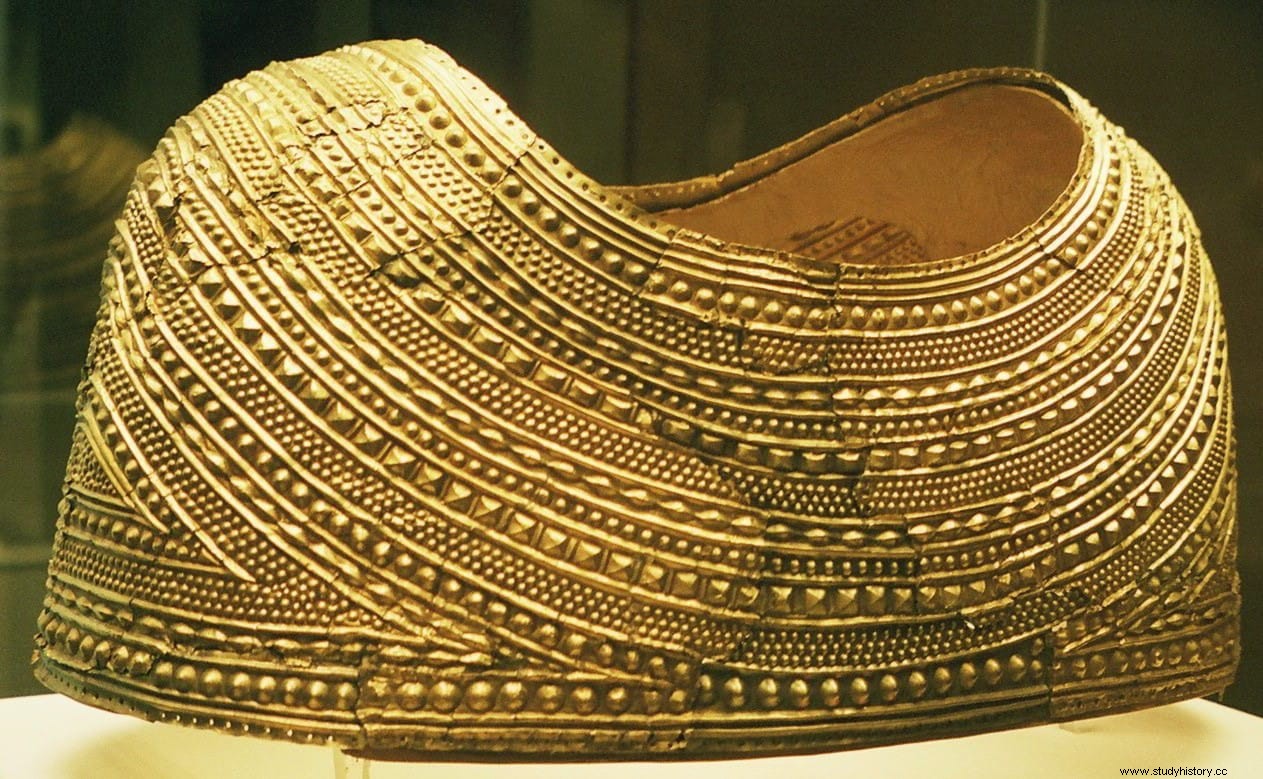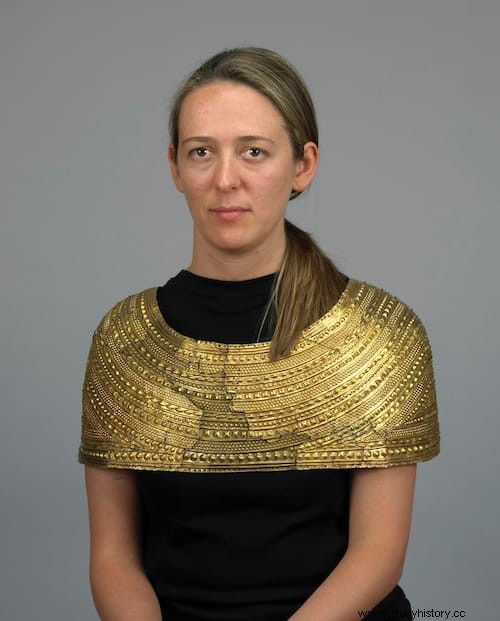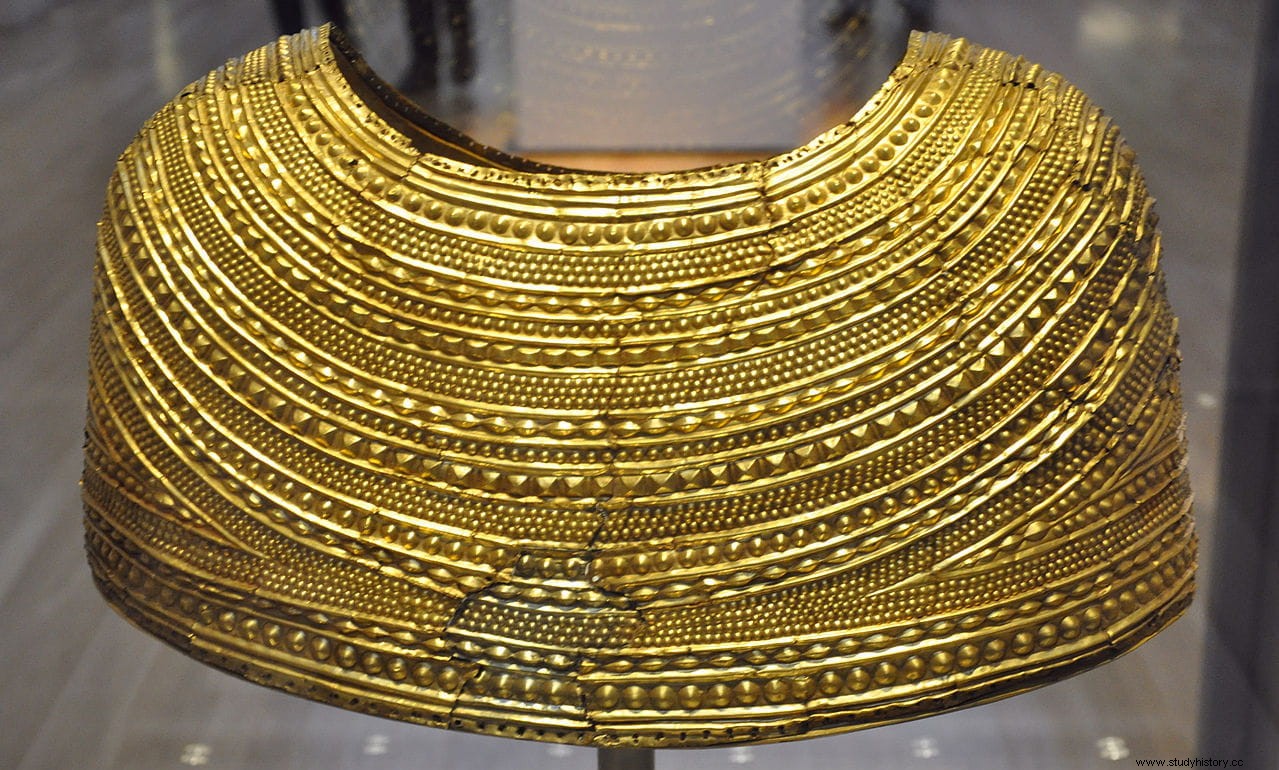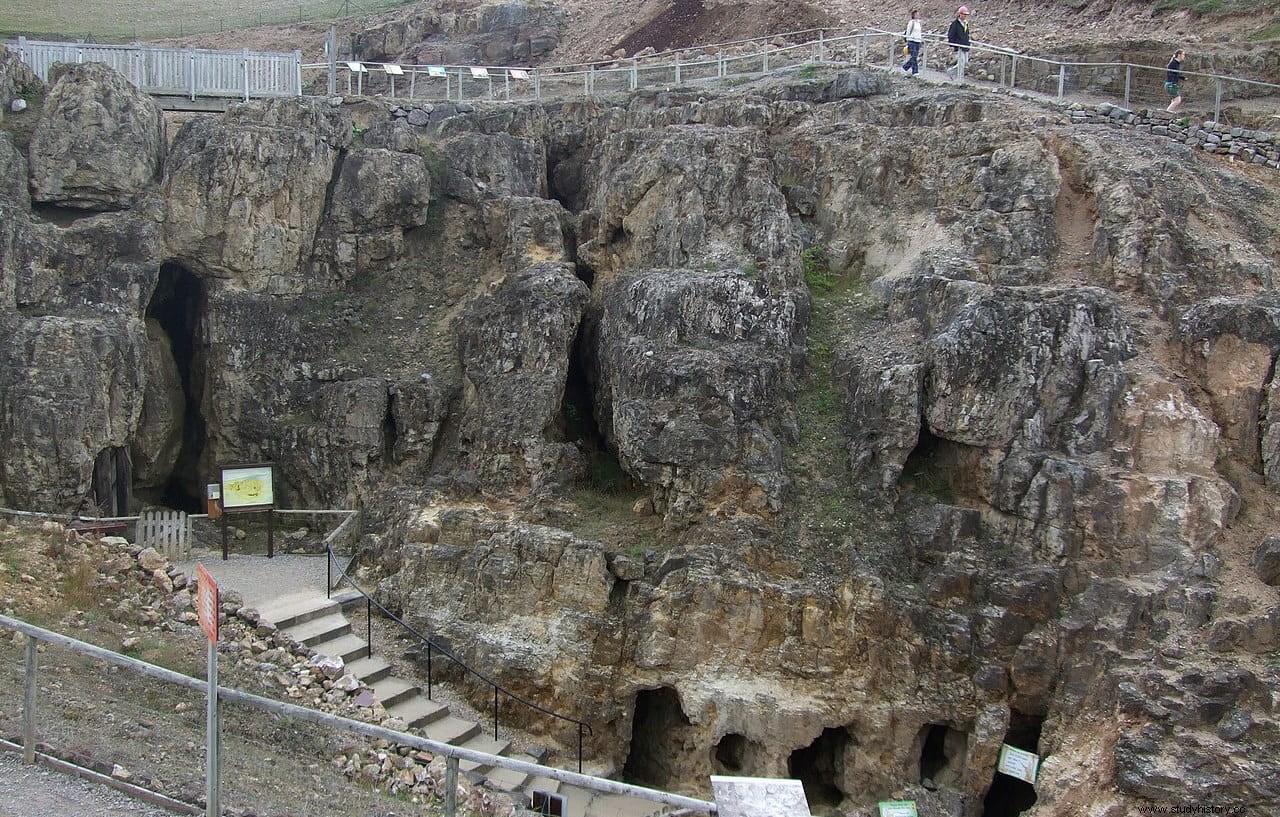In the year 1833 workers in a quarry on Mount Bryn yr Ellyllon (literally Hill of the Fairies ) in Mold, a town in the county of Flintshire in North Wales, found a prehistoric burial mound containing a simple stone-lined tomb. It contained the remains of an individual on which a golden object had been placed.
Upon removal, the object broke into several pieces. At first, due to its shape, they believed that it was part of the chest ornament of a horse, made with thin sheets of gold 0.11 millimeters thick.
It had some 200 or 300 amber beads distributed in several rows, remains of a thick fabric on the inside, and 16 fragments of bronze sheets that served as a support for the gold. In addition, in some parts the gold sheets were joined to the bronze ones with rivets of this same material.

Three years later, in 1836, the British Museum acquired most of the fragments and gradually acquired the rest until the piece was recomposed almost in its entirety.
In the 1950s Liverpool University professor Terence Powell suggested that it was a cloak. The restoration begun in 1954 revealed, in fact, that its shape was that of a kind of oval cloak that the individual whose remains were contained in the tomb must have been wearing at the time of burial.

It has been dated between 1950 and 1550 BC, that is, in the European Bronze Age, and was possibly part of a ceremonial outfit related to one of the prehistoric cults of the part of Wales in which it was found. Of the almost 300 amber beads (probably from the Baltic) in rows that she originally had and were found with her, only one is preserved today (the only one that reached the British Museum).
The cape is only 18 inches wide, indicating it was designed for someone with a very slim build. It measures 23.5 centimeters high and weighs 560 grams. Once worn, it should cover the shoulders and upper arms and chest of the person wearing it.
It is higher in the back and lower in the front. It has perforations along the top and bottom edges, which could indicate that it was attached to a leather or other fabric lining.

According to Jon Gower, recent research has debunked the idea that the cloak was initially designed to be worn by a man. It would also have fit any woman with a slim, athletic build. Without dura, it was an impressive garment that had a ceremonial function. It limited the movement of the arms, suggesting that the wearer might have been required to do nothing more than lead or participate in a ceremony.
It is considered one of the most spectacular prehistoric works of goldsmithing with gold plates, and both its shape and design have no equivalent among the Bronze Age objects found by archaeologists.

It was made from a single gold ingot and then decorated by embossing with different types of motifs in concentric bands:vaulted projections and pyramidal, lenteid and conical protrusions, all alternated with ridges, which seem to imitate beaded threads between the folds of a cloth.
The researchers believe that the quality of the piece indicates that it was created by a rich culture, and that it is therefore possible that both the goldsmith who created it and its owner were associated with the prehistoric Great Orme mine in North Wales, which at that time it was the largest copper mine in northwestern Europe. It is estimated that throughout its history it produced enough copper to make some 2,000 tons of bronze.
Fonts
The British Museum | Giulio Morteani, Jeremy P. Northover, eds. , Prehistoric Gold in Europe:Mines, Metallurgy and Manufacture | Jon Gower , The Story of Wales | Neil MacGregor , A History of the World in 100 Objects | Wikipedia
